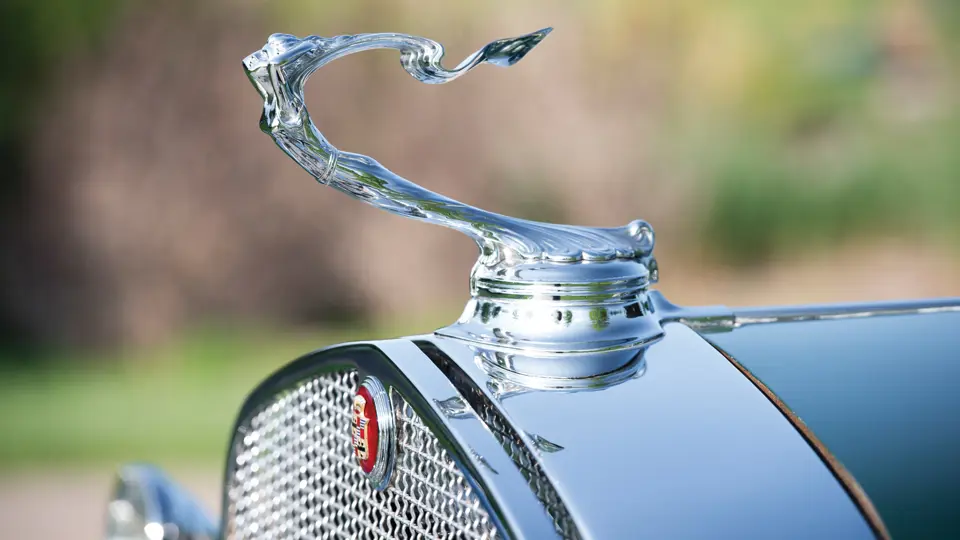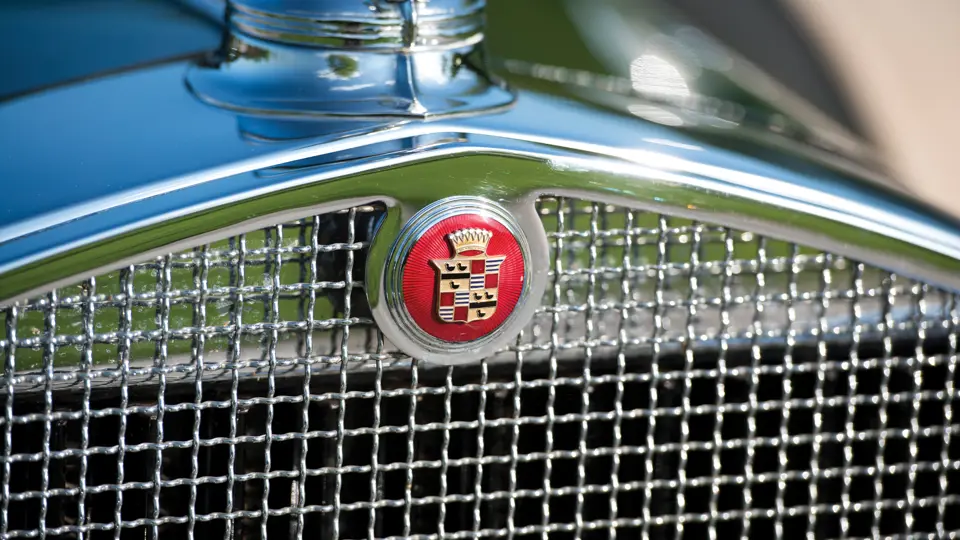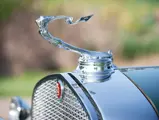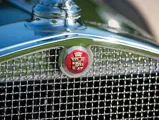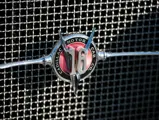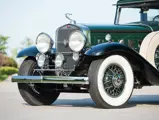Body Style 4155S. 185 bhp, 452 cu. in. OHV V-16 engine, three-speed manual transmission, front and rear semi-elliptic leaf springs with hydraulic dampers, and four-wheel vacuum-assisted mechanical brakes. Wheelbase: 148 in.
On January 4, 1930, New Yorkers were treated to an engineering tour de force. At the opening of the National Automobile Show at the Grand Central Palace, Cadillac unveiled the world’s first production V-16 automobile engine. Aesthetically, this powerplant was a work of art, and it was said to be the first powerplant that was truly styled, as all of the wiring and hoses were concealed to the extent possible, hidden behind covers or in raceways. Viewed from outside, the engine department showed no clutter whatsoever. The late historian Griffith Borgeson described it elegantly as being what “made Cadillac, beyond all discussion, the absolute world leader in motoring magnificence…it was the super engine that set the whole exercise apart.”
The exterior design of the V-16 was not left behind though. Buyers could choose from a plethora of 54 bodies, with the most ornate and most expensive being part of the so-called 4100 series, a group of closed body styles distinguished by sporty 18-degree slanted windshields and narrow window pillars that were edged in chrome. Early on, the sobriquet “Madame X” was applied to the style, after a famous stage play of the era. It was a name never used by Cadillac, but has been enthusiastically adopted by enthusiasts.
The car offered here is body number 2, in style number 4155S, meaning that it is a five-passenger sedan cabriolet with a “convertible-look” leather-covered padded roofline. It is believed that only seven V-16 Cadillacs were produced in this style, and in the case of body number 2, this was likely the first to be built with a one-piece windshield at the Detroit Fleetwood Works. Today, this is the only Madame X Sedan Cabriolet known to survive.
The original Cadillac build sheet for this Sedan Cabriolet, a copy of which is on file, records it as having been delivered new by Don Lee Cadillac, of Los Angeles, and that it retains its original engine. It was later part of the well-known collection of early V-16 enthusiast Wayne Merriman before being restored in its present green and black livery some years ago. It is distinguished by its landau irons and formal roofline, and it has an undeniably jaunty air, which is accentuated by soft wool broadcloth upholstery within. Numerous accessories on the car include a rear-mounted trunk and rack, chrome wire wheels shod in wide whitewall tires, dual driving lights, covered side-mounted spares, and Cadillac’s goddess mascot. The rear compartment is complete with dual smoking sets and vanities, as well as a shade for the backlight.
This is a V-16 of fine character and elegance. It is ideal for continued enjoyment on CCCA CARavans and other tours, and another one like it may never be found.


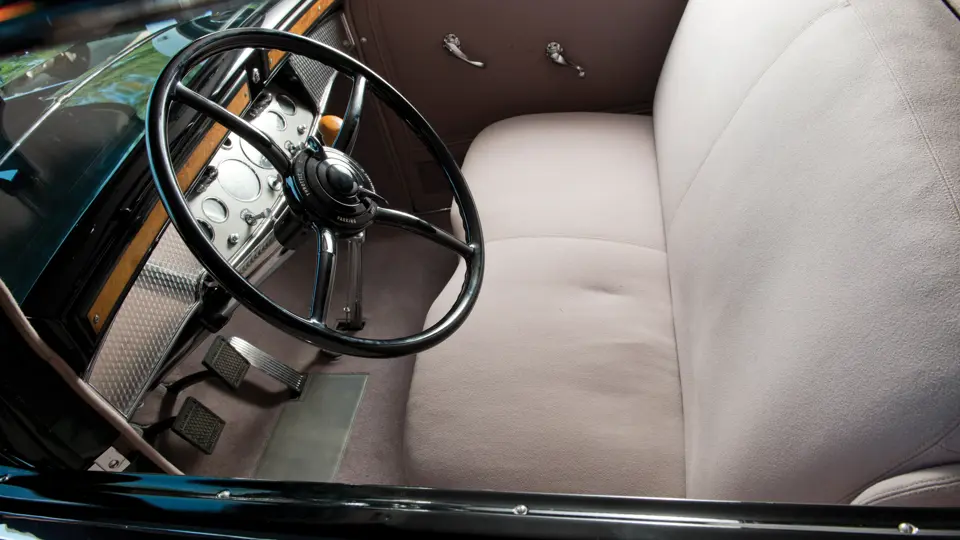



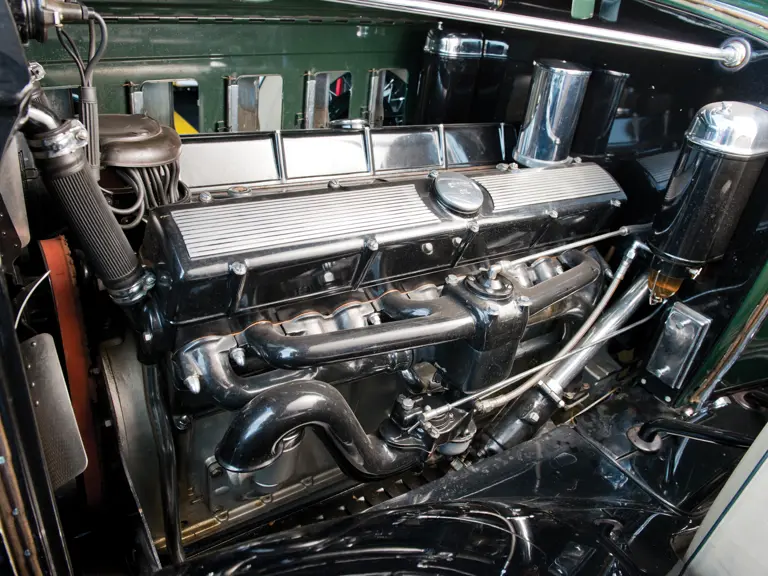
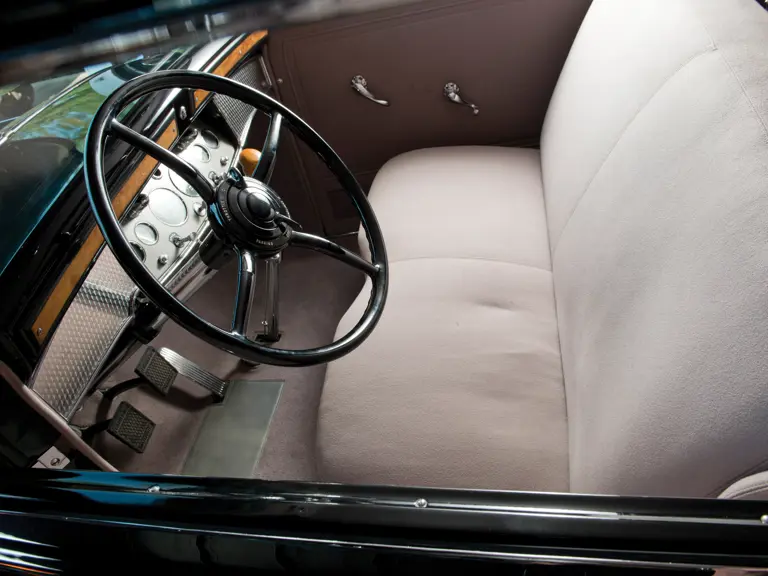


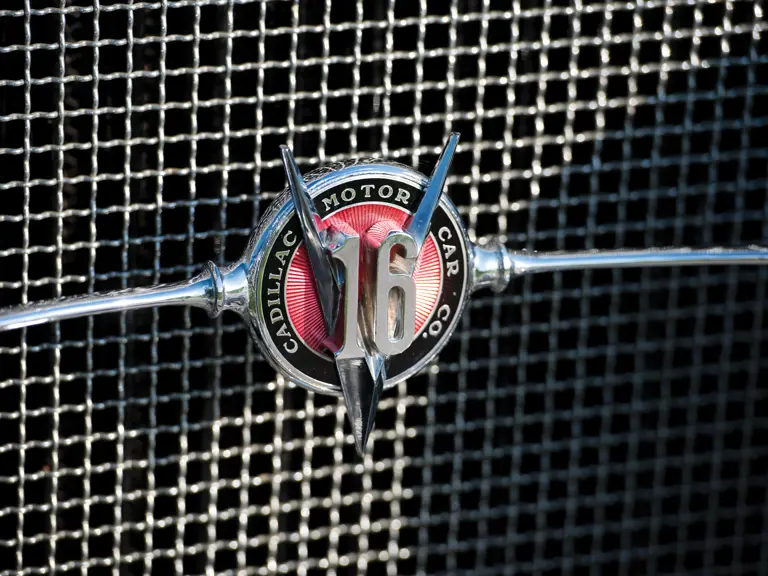

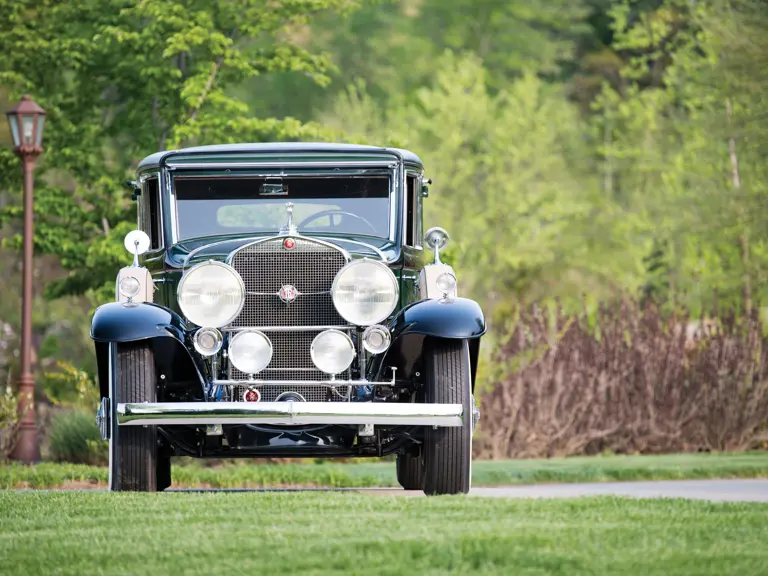
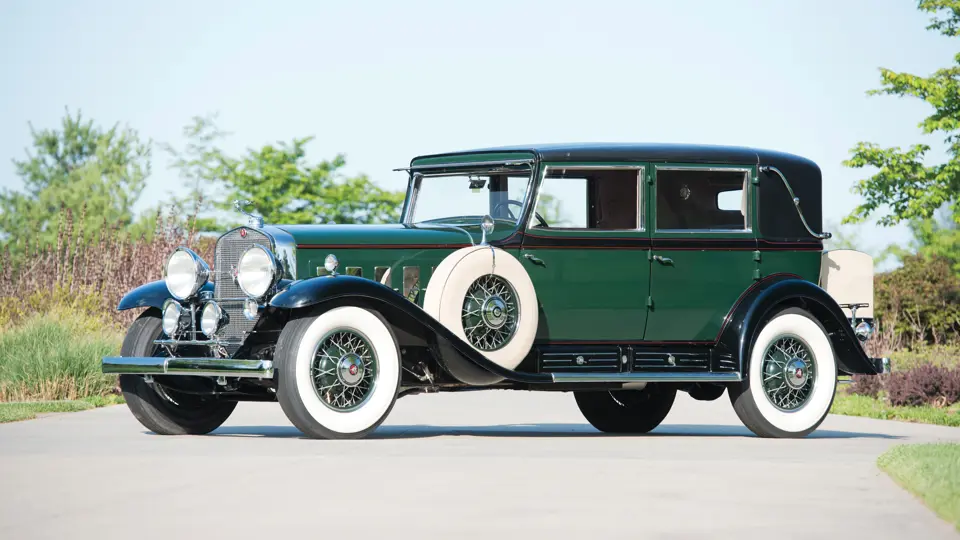
 | Hershey, Pennsylvania
| Hershey, Pennsylvania
